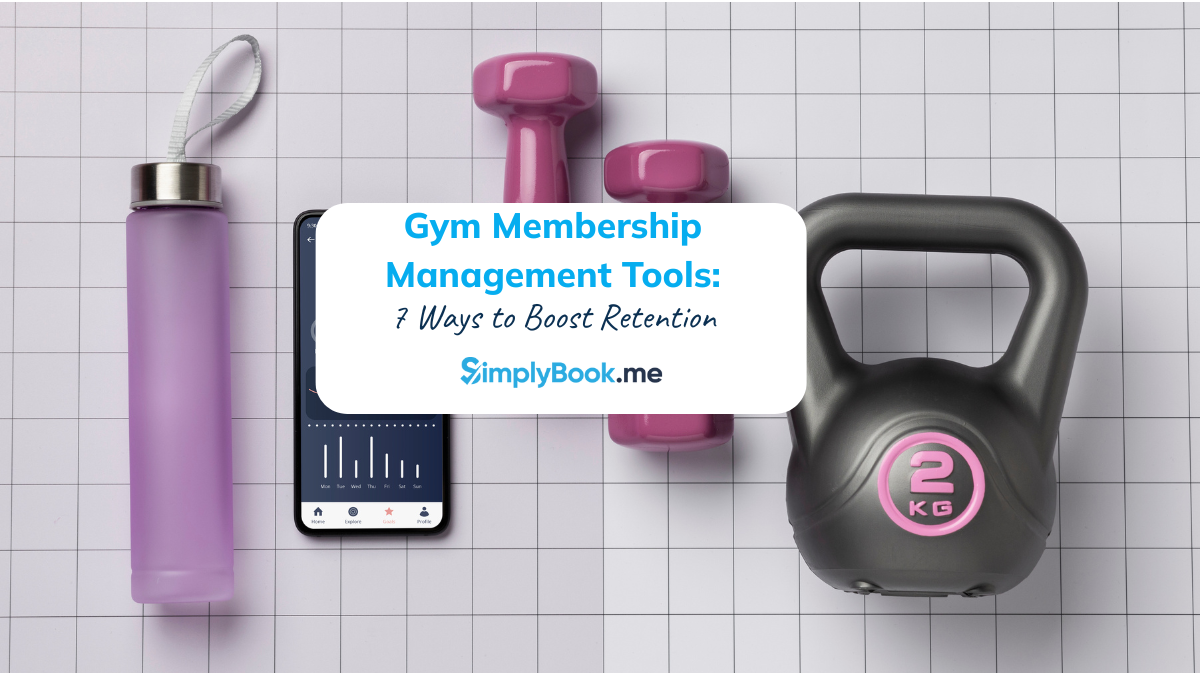How to Open a Yoga Studio

This post is also available in:
![]()
![]()
![]()
![]()
As the yoga market is growing, you might be wondering if starting a yoga studio is a profitable business.
The answer is ‘yes’ – earning a full-time living from a yoga business is feasible.
But how to start a yoga studio and run it successfully?
Look no further! This article will guide you through the process, from writing a business plan to marketing your yoga studio.
1. Prepare a yoga business plan
Preparing a business plan for your yoga studio sheds light on every facet of your enterprise. It covers all your plans and projections, making the information you and any business partners need easily accessible.
A thorough plan should include an executive summary, your yoga business description, market research, an overview of your offering, marketing and financial plans, and other relevant aspects of your business.
Market analysis
In the early stages of writing up your yoga studio business plan, research and analyze your market. The more you understand your potential customers, the better you can serve their needs.
An excellent way to kick things off is to research what other nearby yoga studios offer. Don’t just stop at that—engage other studio owners to find out if there is anything you may contribute that they are missing.
Here is what your market analysis should entail:
- What is the target market? Determine the demographics of your prospective clientele, including age, gender, and so on. Also, learn more about their preferences for services.
- Market size and potential for expansion: This should cover market size, trends, prospects for growth, and legal issues. Emphasize your studio’s competitive advantage and how it differs from others.
- Market trends: Examine established and developing trends in the yoga business, such as shifts in consumer preferences. Describe how your studio will handle every trend and serve clients in the best way possible.
Financials and Budgets
Prepare a thorough summary of your financial and budget projections for the first few years of your operations. Your financials and budgets should also factor in recurring expenses for running your studio, such as rent, utilities, marketing, insurance, staff salaries, and more.
If you have plans to generate income for your studio through other means, then outline them in this section. For example, your yoga studio can earn additional income by selling yoga gear or offering retreats. You can also create online courses for yoga enthusiasts worldwide – from credited teacher training to seminars on diverse topics.
How much does it cost to open a yoga studio?
The cost of starting a yoga business varies depending on the studio’s location and size. To start, you’d need an investment of at least $15,000.
How much do yoga studio owners make?
Yoga business is lucrative, and studio owners can make $7,000 in gross monthly income or up to $80,000/year, depending on various factors.
How much do yoga teachers make?
How much you make as a yoga teacher will depend on your certifications and experience, the studios you work in, and the number of classes you teach. Most yoga teachers are contractors paid by the hour (average $30/hour) or by the number of students who attend their class (around $3/student).
2. Register a Company and Obtain Licenses
You’ll need to register your yoga studio as a company and obtain all the necessary licenses before you can kick-start operations. Failure to acquire essential business permits and licenses can result in fines or even a business shutdown.
To find out what licenses and permits are needed to operate a yoga studio, go to your local authorities tasked with registering businesses.
Moreover, you need to hire staff with the training and licenses to work as yoga instructors.
3. Choose your yoga studio location
The location you choose for your yoga studio will significantly impact its success. Finding a suitable place within your budget is one of the few hacks for managing your daily business expenses. However, you must look beyond the obvious, such as fancy establishments within your locality.
For example, look at residential neighborhoods where people might need a studio close to home. You can also consider the central business district, provided that individuals in that area fit the target demographic.
The population surrounding the studio also needs to be substantial enough to support a profitable yoga business.
4. Plan your yoga studio offering
When starting a yoga studio, the most important thing is to have a clear business vision. You will need to carefully consider all of your objectives and desires when you envision the future state of the studio. Part of this includes planning your yoga studio offering and how you can serve the needs of your potential clients.
Some of the critical factors to include when planning your yoga studio offering include:
Types of Yoga
It is best to provide a fantastic yoga experience to all your clients according to their needs and preferences. The first step to achieving this is to look at your studio’s schedule regarding the types of yoga provided. Common types of yoga worth exploring are:
- Hatha yoga
- Vinyasa yoga
- Hot yoga
- Aerial yoga
Remember that your studio needs will vary depending on the type of yoga offered. For instance, you’ll need a closed practice space for hot yoga sessions. Similarly, a high-ceilinged studio is necessary for aerial yoga sessions.
Class timings
The timings of your yoga classes play a crucial role in whether you’ll attract clients to your studio. Consider flexible schedules to find the best time that works for your customers.
Create a yoga class schedule that allows your clients to follow through with their yoga classes per their preferences. You can start by scheduling classes in the evening right after work and early in the morning before work. This timing works for most people.
Single-class and membership prices
Memberships are the cornerstone of every yoga studio. They ensure that your studio can continue running through the ups and downs of the seasons. To make a lasting impression, consider printing custom stationery for your business and giving it to first-time members. Add your logo and contact details so customers can keep in touch.
As your customer base grows, you’ll need to keep track of all data in a central place. With a cloud based CRM software (Customer Relationship Management), you can easily access customers’ contact details, memberships, and preferences and record every interaction you make. You can use it to discover inactive customers and re-engage them with discounts and offers.
5. Hire the right people
Even if you are a single-person yoga studio, you’ll need to hire people to help you at some point. However, hiring and retaining the right people is one of the hardest things for any studio owner.
Remember that your yoga studio offers its clients a particular brand, quality, and experience. So, one crucial consideration is hiring people who convey your brand attributes and expertise.
6. Outline your marketing strategy
After setting the groundwork for your yoga studio, develop a marketing plan that helps your business stand out.
Start by building your website. Visitors should be able to easily find your studio’s location, the prices for each class, and your opening and closing times. You can also run a blog with helpful yoga content, which will help with your business’s rankings in search.
Use a customer feedback tool to collect insights from current and potential customers – they will help you adapt your offering and marketing for success.
You can also consider other marketing advertising avenues like social media marketing. It is a challenge to put out content for several platforms at once. However, you can use AI to repurpose one type of content into another. Let’s say you’re creating yoga tutorials for YouTube. You use an AI repurpose tool to create short-form videos for YouTube Shorts, Instagram, and TikTok.
Remember that your marketing approach should be consistent with your budget.
How to start a yoga studio: common mistakes to avoid
As a potential yoga studio owner, here are some of the common mistakes you should avoid when starting a yoga studio:
1. Hiring the wrong people
When hiring yoga teachers and other staff, determine whether they fit your personality and the studio’s brand voice. It’s critical that the yoga instructor shares your philosophy about teaching and physical fitness.
2. Undervaluing partnerships
Partnerships provide many benefits that might help you attract more clients and strengthen your brand. Partner with fellow small business owners or influencers who share a similar audience to yours. It could be a local café serving healthy food or a fitness content creator.
3. Lack of a distinct brand voice and authority
Not having a clear branding strategy before opening your doors is a significant error you can make. Your company lacks direction if it doesn’t have a strong brand. Start by creating a Google My Business account to establish your brand as a business authority.
Final thoughts: how to start your yoga studio
Any new business venture requires proper planning and a readiness to take calculated risks. Starting a yoga business is no different. It requires perseverance, effort, and ingenuity to overcome all the challenges that come your way.
Author bio
Evelina Milenova’s expertise lies in SEO and content marketing – two topics she often writes about on her LinkedIn page. She’s also a digital nomad and certified yoga teacher who shares her yoga insights on Elevate Calm.



Comments
0 commentsNo comments yet